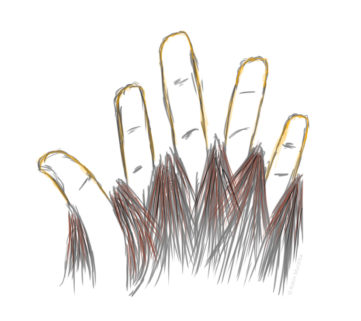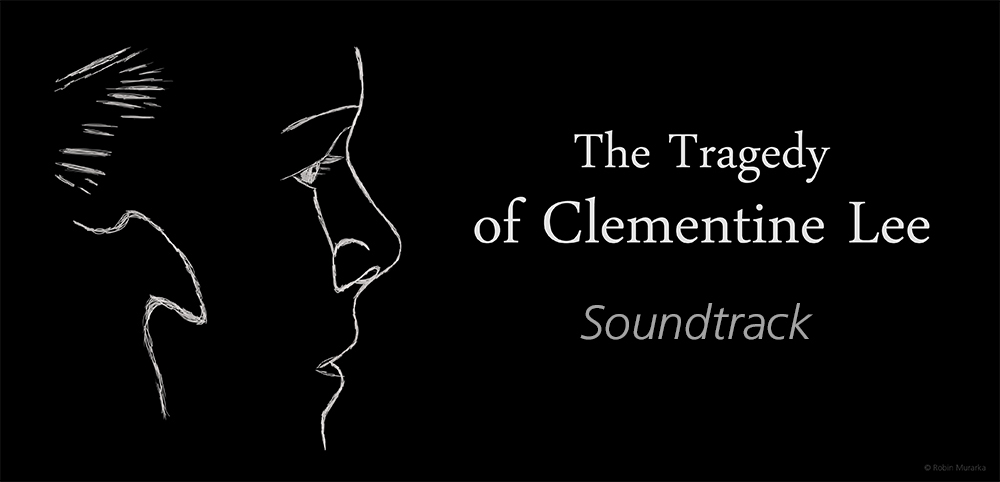The High-Functioning Codependent
Codependency is an interesting pathology, though not in and of itself, but rather how wide the ramifications of such a pathology are, and how under-exposed people are to it. Codependency is actually quite simple and uninteresting as a concept.
Codependency is a complicated word for, one might say, “pathological passivity”. Passivity is defined as:
acceptance of what happens, without active response or resistance.
We all may be passive in some form or another to different people, and this passivity varies depending on the nature of the relationship. One might be passive to their mother due to the matriarchal position she plays, but less passive than another individual who may be terrified of what she might think of him or her. So as you can see, not only is our passivity varied among individuals, but it also varies in degrees.
When something goes from being a generally acceptable behavioral characteristic to an extreme where it begins to become anti-social, we can then extend the term “pathological” to it. For example, we are all narcissistic to some degree in that if we see a chocolate chip cookie our immediate response may very well be examining how it will make us feel to gobble it up, and therefore, desire it absolutely. This can be considered a narcissistic response. However, if it goes so far as to then begin to plan how to acquire that cookie through the use of dishonesty or manipulation to ensure no one else can access it, we then begin to tread on pathological narcissism because the individual is exhibiting anti-social characteristics – ie, he or she is now moving towards the extreme fringes of this behavior.
Codependency therefore can be further described as “anti-social passivity”. This term then provides us a little more understanding of what it may entail, and allows our imagination to come up with scenarios.
Imagine a situation where there are two individuals and one cookie. Both individuals are desirous of the cookie. In a generally healthy situation, both individuals would communicate their desire towards the cookie, and discuss, through rational analysis, who deserves it, or on an even higher level, who would most benefit from it regardless of who deserves it. After analyzing the pros and cons, expressing ones own desires and feelings, these two would eventually come to a conclusion that satisfies them both to a reasonable degree. Let’s say, in this case, one individual said that he hadn’t eaten for four hours and has low blood sugar, whereas the other person had a big hamburger half an hour ago. They then conclude that because of the huge gap in the low blood sugar individual’s food situation, it would be best if he got the cookie.
The issue is resolved.
Let’s now address the same situation where one person is generally healthy and the other is a codependent. In this case, the healthy individual will have a desire for the cookie. However the codependent will experience a different set of events. We are now going to apply a pathological passivity to the situation to try to assess what plausibly could happen within the codependent’s thought patterns. Initially, they will see the cookie and a base narcissistic (and healthy) response will occur – that is, “I like cookies.” However, subsequent to this, the codependent will experience thought patterns rooted in passivity that then work to deal with this healthy narcissistic response.
You see, the codependent has an additional set of instructions and reactions that happen, specific to dealing with their own sense of healthy narcissism. Whether it’s conditioned or a case of hard wiring, the codependent has an inherent shame attached to his or her own narcissistic tendencies. This shame then attracts “control” mechanisms put in place to suppress that narcissism in favor of the narcissism of those around him or her.
The reason this happens is because unlike a healthy individual that has a conditioned response along the lines of “I desire” -> “I pursue -> “I get” -> “I experience fulfillment”, the codependent has a more complex conditioned response. This may be along the lines of “I desire” -> “I pursue” -> “I am punished for someone else’s conflicting desire” -> “I support someone else’s desire” -> “I experience some form of fulfillment at the behest of someone else”.
However, let’s look at this from a more scientific, neurotransmitter-geared conditioned response perspective. This response is rooted within the “reward system,” one we are all built with. Within this system, when something “positive” happens, our brains release positive neurotransmitters into our brains, making us feel good. Similarly, when we feel negative, the release of these transmitters lessens, and other antagonists may also be present in an effort to teach us that good = reward and bad = punishment. This is an intrinsically useful mechanism built into us to assist us in surviving the perils of every day life.
As a child, you have a very base reward system that includes mostly food and other basic needs such as affection, safety, comfort, warmth etc. However, as you grow, the relationship you endure with your parents and environment train your reward system quite powerfully, and this will likely stay with you for the rest of your life.
Now that we have a basic understanding of the reward system and how our brain chemicals react to it, we will now try to funnel the example above through it. When a normal person wants something, they pursue it, and in most cases, are naturally trained that when they want something, they are likely to get it some percentage of the time, and this leads to a positive release of neurotransmitters. This leads to their reward system paralleling this operation, and as they get older, they naturally feel inclined towards whatever they want because they are chasing the proverbial “carrot” at the end of the stick, albeit one they actually get some of the time.
However, when we re-examine the molested structure of the codependent:
“I desire” -> “I pursue” -> “I am punished for someone else’s conflicting desire” -> “I support someone else’s desire” -> “I experience some form of fulfillment at the behest of someone else”
The reward system is not so clear. As we are humans, and therefore highly advanced creatures that adapt to our environment, this system simplifies in the codependent’s behavior (and especially so in the high functioning codependent):
“I support someone else’s desire” -> “I experience some form of fulfillment”
As you can see, the first half of the operation ceases to even consciously occur much of the time because it is inherently inneficient from the reward system’s standpoint. Imagine a child that is raised by a very narcissistic mother and father. Every time the child wants a glass of milk, unless the mother and father wish to provide the child a glass of milk at that very moment for their own fulfillment, the child is likely to be punished in some way or another, be it neglect or worse. The parent may even go so far as to react with accusations towards the child, pointing out that there is no milk in the house, and that the child knows this, and by bringing it up the child is purposely trying to make the parents feel poorly. Either way, the child experiences a drastic loss of reward (or harsh emotional backlash) for pursuing something it desires.
But as previously mentioned, we are always chasing the proverbial carrot – so this child will, naturally, as a reaction to being punished, seek the release of the positive neurotransmitters in any way possible. Since it is now clear that pursuing what he or she wants is not doing this, the child may then seek to appease the parent by providing them a hug, or a drink, or massaging their feet, or some other form of acquiescence that is created as a result of trying to be rewarded at any cost.
If the child does this, and is then rewarded, a conditioned response is created and the reward system is tweaked. If this happens hundreds of times, after those hundreds of times, when the child seeks to feel positive and/or rewarded, they will not even feel thirsty for milk; they will naturally, automatically seek to massage their parents’ feet, as this is now what his or her reward system has been programmed to do.
This is a rough example, among many, that can lead a normal, healthy child into having a codependent reward system.
There are a few things to note at this point – firstly, not all children will react, at the moment of initial punishment to pursuing their desires, by trying to appease their parents. Many may react with more aggression, while others may attempt to shut down, disassociate, or have a multitude of other responses as a form of coping with this trauma. These are not exclusive to becoming codependent, but it is safe to say that pursuing a passive approach is not necessarily every child’s go-to method, and may not work for each child on a long term basis. This may be due to the child’s own psychology, or may also be because their parents simply do not support such a system. That is to say, after it happening ten times, if the parent no longer rewards the child for passive behavior, then the child is unlikely to successfully be conditioned towards codependency because that is not working for them in their home dynamic.
It is also important to note that not all children will take codependency to heart, and though it is an undesirable pathology, it is in fact highly desirable while in bondage. In fact, the more adequately the child adapts to this new reward system and acclimates its inner workings towards other people’s satisfaction, the quicker the child will be able to bear the fruits of reward within this environment with as little friction as possible. This leads us to the viable hypothesis that high-functioning children that find themselves in these environments are likely to become true, pathological codependents as compared to lower-functioning individuals, as lower-functioning individuals will adapt less readily to their environment. They are therefore more likely to remember and hold onto their initial pursuit, that is:
“I desire” -> “I pursue” -> “I am punished for someone else’s conflicting desire”
Higher functioning children forced into codependent positions are likely to become so efficient at their codependency that they will soon forget entirely that anything like this has happened, and the emotion relating to the missing portion of their initial reward system hides itself deep in the recesses of their subconscious.
To exasperate this, high functioning individuals will then not only bear fruits for their actions, but it is likely this behavior will be readily re-enforced by their environment as most people are quite content to receive unquestioned support in anything they wish to do. This high-functioning codependent will then be fortified by the idea that they are simply “great friends” that provide endless support and care to everyone around them.
Great – so what’s the problem? We all grow up different, some more selfish, some more giving, but as long as we’re happy and everyone around us is happy, what’s the problem?
The problem is this:
“I desire” -> “I pursue” -> “I am punished for someone else’s conflicting desire”
This thing never, ever goes away. It stays in there, somewhere, and like an invisible tumor in the skin, keeps feeding the codependent’s brain with rootless negative emotion.
Imagine the cookie scenario. There it sits, this juicy, tasty, half melted and chewy chocolate chip cookie. The normal individual desires it and has access to that desire. He or she looks and imagines the taste, the flavor, and the satisfaction of that cookie.
Imagine what goes on in the codependent’s mind. They look at the cookie, and certainly identify, as they would as children, the tasty, highly satisfying desire that exists towards that cookie. The codependent knows exactly the same thing as the normal person: that the cookie is chewy, half melted, and very tasty. However, all of this, all of this natural impulsion is immediately collected, observed, and the codependent’s brain actually punishes them for their desire towards the cookie. It punishes them because this is the path of the conditioned response – they are punished, and this punishment is quickly, almost seamlessly replaced with the feeling of satisfaction derived from the other person getting the cookie, for the reward system that has been implanted in them.
This is where the situation gets somewhat disastrous, yet again, for the high-functioning codependent. A low-functioning individual suffering from codependent pathology will, at the base level, as previously explained, be less efficient of a codependent. They adapt to their environments slowly, and less efficiently than their higher-functioning counter parts. This helps them in one sense, as when they see the cookie, they are more readily able to access their initial desire towards it than the high functioning codependent because they did not evolve to their childhood conditioning as efficiently or absolutely. This allows them to witness their own desire, hold onto it, and the tumor we mentioned earlier is not quite so elusive; they may actually be able to recognize that they would rather have the cookie but make a conscious decision to suppress this choice. A high-functioning codependent is not gifted with this luxury. They will not even know why they feel bad, but they will, over time, due to the cookie, and have no real understanding or access to the fact that they, themselves, wanted it.
But it gets worse. Since the lower-functioning codependent has a less absolute pathology, the negativity they suffer in the situation is likewise less, because they are more able to access their own desires, and therefore, satisfy their needs in some capacity or another, or at least compensate for the loss of the cookie. The awareness that they would rather be self-interested is more present, and will therefore manifest in self-interested actions that serve to compensate them for their forced passivity. However, the higher-functioning codependent has no awareness that they even wanted the cookie. So when they experience rootless negative emotion after the event, the only thing they have to associate to it is what they perceive to be an act of love.
Think about it – imagine sitting next to another person and offering them the last piece of pie because it makes you feel good. Then afterwards, just feeling terrible. No clue why, with no clear resentment towards the other person – you just feel low, or bad, and everyone around you somehow contributes to this feeling.
No matter how much someone pats you on the back to tell you that you’re a sweet, kind person, that you should take shelter in that belief, and that the world hasn’t treated you right, but you’re a lovely, caring person, there is no way for you to escape feeling low. Yet, at the same time, you do enjoy being kind to others, and want to keep doing it.
Even if a lower-functioning individual got to this point, their reaction to the current state would be less extreme. Now, a new environment has been created: the individual now reacts poorly to being kind to others. This is the new environment, and the individual must now adapt to this. The lower-functioning codependent will adjust slowly and with less vigor, and therefore, they will experience less discomfort to this paradoxical situation. But the high-functioning codependent is now placed in an impossible position: they are forced to adapt to a situation where their own sensibilities about being kind to others results in emotional punishment – the only solution is to become cruel in the company of others, but this, theoretically, may be difficult to an otherwise healthy individual who experiences compassion, empathy, and a sense of camaraderie.
Let’s recap what we now understand about the high-functioning codependent. Firstly, while around other individuals, they rarely witness their own desires. Secondly, they experience a great deal of satisfaction through self-sacrifice and self-marginalization. Thirdly, they experience emotional angst in the form of anger/pain/self-loathing as a result of self-sacrifice and self-marginalization.
At this point we will leave the low-functioning codependent as their life can continue for extended periods of time in this doublethink emotional state due to their lack of necessity and ability towards absolute adaptation.
How does the high-functioning codependent attempt to adapt to this situation?
Initially, they will attempt to cope to this rootless negative feeling by legitimizing it through self analysis and observation. Think of it as a torpedo without a target. The codependent will observe themselves and attempt to allocate the negative feeling to a certain state. For example, the codependent may think that they are fat, or ugly, or their hair is too long, or too short, and accordingly, attempt to alter their appearance, believing that the negativity spawns from that. Perhaps it is their job, or their co-workers, or some lack of communication between them and their loved ones. Perhaps it is childhood trauma, or a variety of other plausible scenarios. Either way, the high functioning codependent will do everything in their power to adapt to this situation by solving the riddle of the rootless negativity by changing themselves.
Inevitably, however, none of these efforts will work. They will likely enhance the individual’s life at times, making life better temporarily, but the negativity will still persist due to their warped reward system.
Once personal responsibility and self-loathing no longer provide solution, the codependent will then begin to examine their environment. Individuals, relationships, and other factors will then begin to play successful host to the negative feeling. They will, both due to the rootless negative emotion and a sense of helplessness in the face of conflicting desires, contemplate that those around them are inherently selfish, and even narcissistic. However in blaming or ostracizing individuals around them using real emotion but without real validity, the high functioning codependent is likely to alienate people around them in chaotic manners, and still at the end of it all, the rootless negativity will continue to persist.
Once random individuals in the codependent’s life are targeted, the codependent will then begin to target those closest to them. This will include children, partners, siblings, parents. This is in fact a potent correlation because the codependent is in fact more likely to be conditioned through their reward system to be more passive towards loved ones than strangers, and therefore, by focusing their negativity on those they are vulnerable to, the codependent will effectively create alienation between themselves and their loved ones. In doing so, the negativity will lessen, fooling the codependent into thinking that the loved ones were the culprits. However, this is misleading; it was not the loved ones that caused the negative emotion, but rather the fact that they were loved ones in and of themselves. This will eventually prove itself true as no matter how many loved ones the codependent alienates due to a perceived narcissism or inherent selfishness, each new loved one will still create negative emotion, and the codependent will then see patterns around them in the presentation of a near complete inability to maintain positive, loving relationships.
The eventuality of this process of adaptation (which can span many years) is a strong desire towards isolation. The high-functioning codependent will, naturally, have experienced nothing but rootless negative emotion at every turn, in each relationship that triggered the reward system within, and a general hopelessness and aversion to any form of emotional closeness will force itself into the forefront of their reward system. That is to say, they will no longer move towards a reward system, but rather run away from a punitive system.
The codependent is now only at peace in solitude, but as time progresses and the rootless negative emotion no longer necessarily manifests, the individual is deeply emotionally isolated. Further, as their reward system has been programmed to operate only in the support of others’ desires, the codependent has no actual mechanism to reward oneself. However, given a life of rootless negative emotion, the loss of numerous close and personal relationships, and the now relatively painless but mute life that proceeds, the high functioning codependent may remain in what can be roughly considered a successful circumvention of the negative emotions that their warped reward system has created.
How does a high-functioning codependent avoid this undesirable eventuality?
Well, the answer is relatively simple. Surround oneself with individuals who understand the pathology, and create an environment where a new and healthier reward system is programmed. And the best way to start is to reward oneself, and be rewarded, for individual pursuits. At first, the codependent will have no access to their own desires. This is understood and normal. The codependent must then arbitrate any pursuit, be it basic such as taste or sense based, and pursue this with the support of others. Then, in achieving it, experience no punishment whatsoever for having done so.
This will initially feel alien, awkward, and forced. The codependent’s own mind will not conform to this and will readily feel like being “selfless” and focusing on others’ pursuits. This must be avoided at all costs for an extended period of time. The codependent must ensure they surround themselves with individuals that are not narcissistic and are able to successfully provide a safe environment for the individual to discover and explore their pursuits.
Eventually, the codependent will begin to recognize their own feelings towards their own pursuits. This will be quiet at first, but with enough positive conditioning, it will become louder and louder, and hopefully as close to normal as possible. The next step is to healthily train the codependent to be able to gauge these desires against other people’s desires. As previously outlined, as a codependent, they have no ability to do so healthily (their own desires are irrelevant). However, in compensation for this, they may jump to the other end of the spectrum and become extremely callous in their pursuits as a rebellion towards this passive pathology. Both are unhealthy as one is codependent and the opposite is narcissism; any form of these in anti-social manners is a pathological sickness that will serve to ultimately lead to isolation.
The codependent must learn, like a child, to prioritize themselves when necessary, and prioritize others when necessary. This must be done, again, with safe individuals in a safe environment, and there may be times where the codependent will need to be narcissistic. The environment must be able to cope with this, and provide the codependent these options at times, albeit with communications about the discomfort such narcissism may cause others. Rather than shrink away as the codependent wishes to, there must be times where despite having heard the negative repercussions on others, the individual still chooses their pursuit, and is rewarded for doing so.
It is through this repeated conditioning process that the codependent’s reward system is reprogrammed to operate in a healthier manner, and with enough practice, the codependent will cease to be codependent.
One of the most unfortunate aspects of codependency is that it is revered as selfless, and the individual may then get stuck in a perpetual state of rootless pain combined with a sense of moral superiority. This is extremely dangerous as the possibility of self-victimization then enters the picture, and a whole new reward system can take shape in this case. While being generous to others is indeed a desirable and laudable characteristic, there is no reason to believe care towards others is pious if there is extreme disrespect and apathy directed at one, undeserving individual. And in the case of the codependent, this cruelty directed at oneself is no different than being cruel towards any other individual; that is to say, if one is truly altruistic, they must include themselves within the definition of “humanity”.








This is by far the THE most comprehensive explanation of codependency that I have ever heard. In the cookie analogy,I would experience great pleasure from giving the cookie to someone else, more pleasure than I would have from eating the cookie myself. Imagining another person’s pleasure fills me with joy. Yes! It is my reward mechanism that is driving this. Thank you a million times for this explanation.